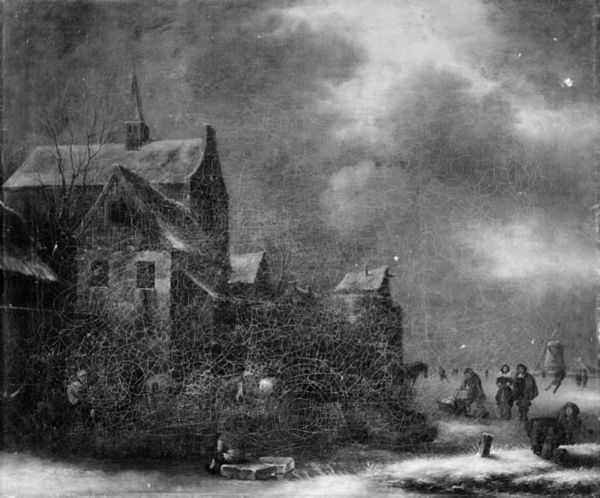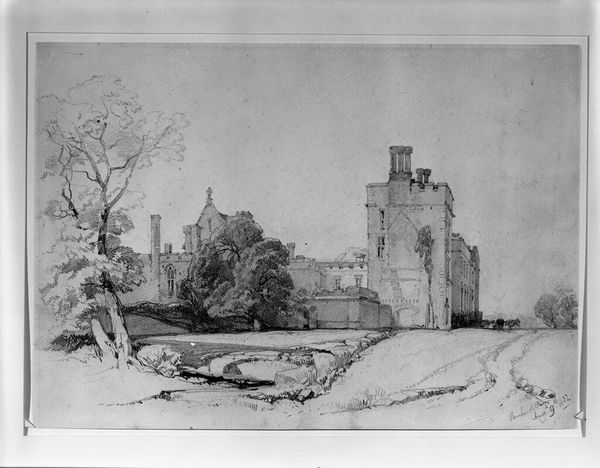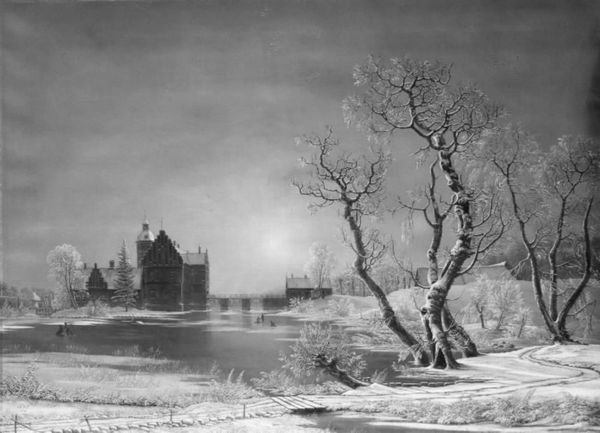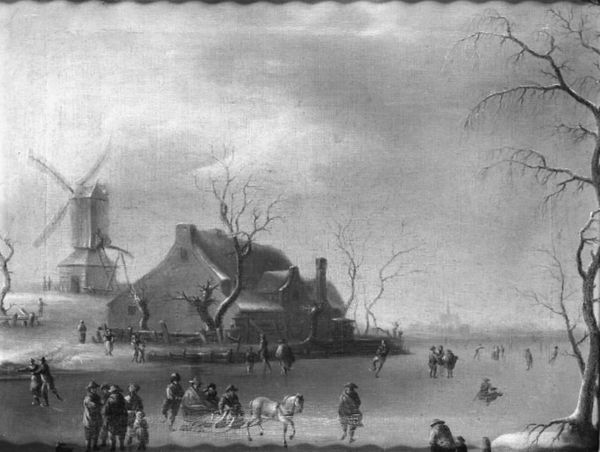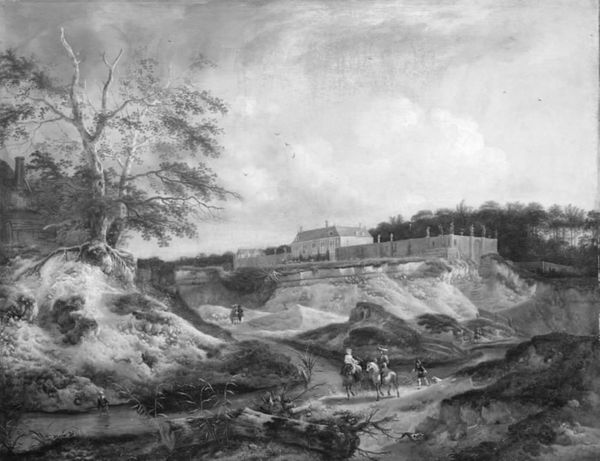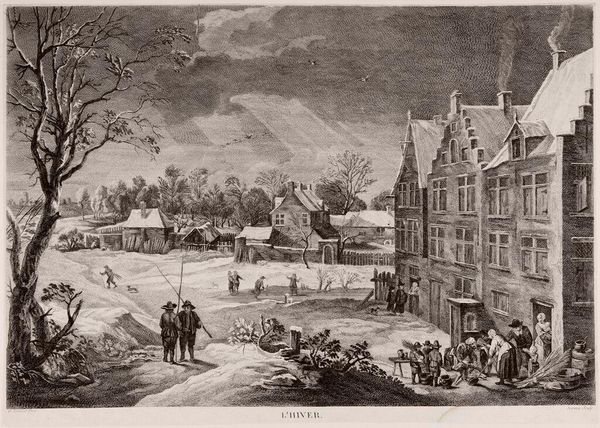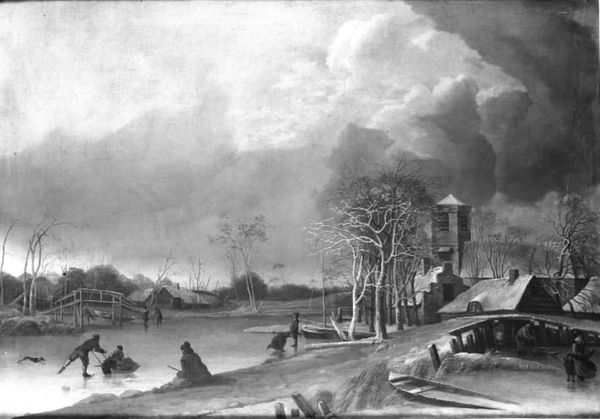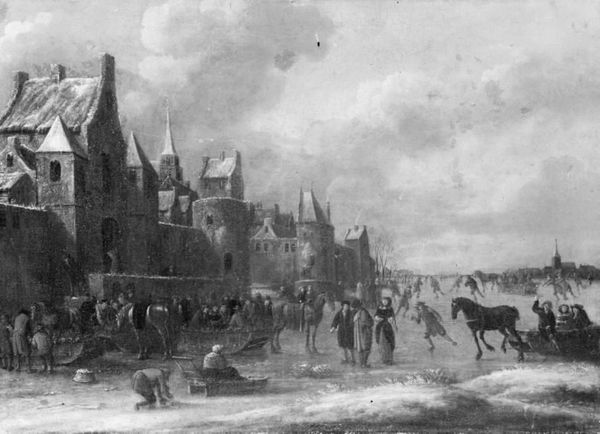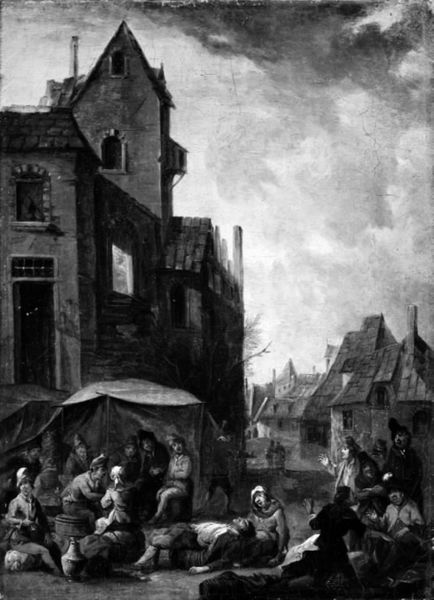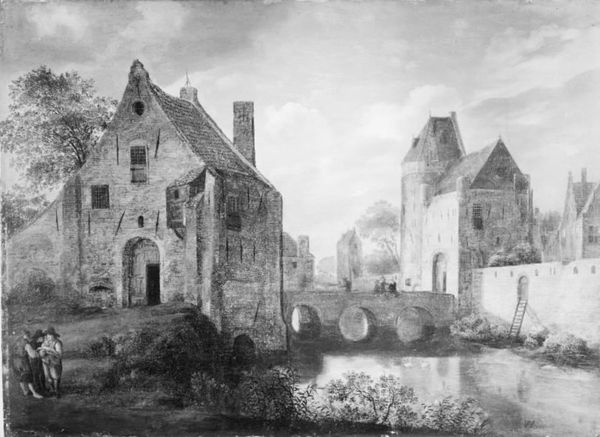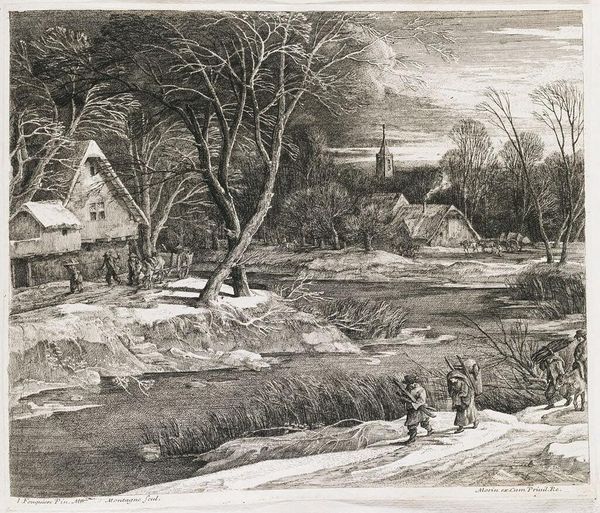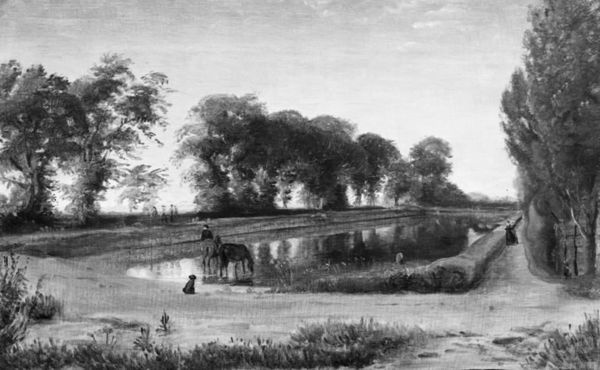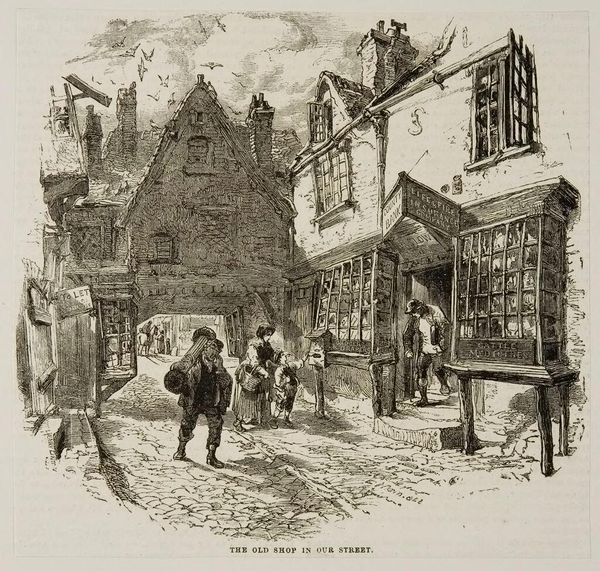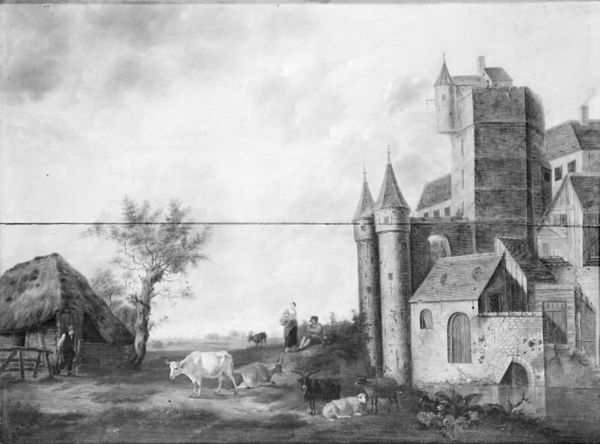
painting, wood
#
narrative-art
#
dutch-golden-age
#
painting
#
landscape
#
winter
#
rural
#
figuration
#
wood
#
genre-painting
#
realism
Dimensions: 32.4 cm (height) x 45.4 cm (width) (Netto), 41 cm (height) x 54 cm (width) (Brutto)
Editor: Here we have an anonymous 17th-century painting, "Winter Scenery," crafted with oil on wood. It depicts figures skating on a frozen waterway beside a large estate. It's such a fascinating image because the monochromatic tones give a chilling, quiet atmosphere, but there’s a sense of dynamism introduced by the skaters and bare trees. How do you interpret this work? Curator: A strict formal analysis reveals that the composition is fundamentally about contrasts. We see the static architecture juxtaposed against the kinetic figures, and the organic forms of trees against geometric lines of the building. Note how the bridge serves not only as a physical structure, but a visual device which bisects the space and frames the skaters below. Consider also how light functions: the artist manipulates value, to create depth. The interplay between foreground and background is key here; can you see how each tonal shift affects our perception of distance? Editor: Yes, I can see how the use of light and shadow directs my eyes across the different planes in the picture, pushing certain parts into the foreground while others disappear into the distance. Is that the artist’s primary aim? Curator: The visual organization encourages us to view the whole scene as one cohesive structure. Look again at how the composition's visual weight seems perfectly distributed around the frame: the darkness in the lower left finds its balance in the upper right corner; the building echoes shapes in the adjacent trees. The beauty lies in the interplay between pictorial elements and our engagement as viewers. Editor: That's a fascinating way of looking at it. So, less about the people and the story, and more about how all those parts construct the whole of the image? Thank you, I am taking notes on the structure itself, how this informs my understanding. Curator: Precisely. By prioritizing its visual architecture, we may be better positioned to ask questions about its deeper, often intangible aesthetic impacts on our sense perceptions and interpretive understanding.
Comments
No comments
Be the first to comment and join the conversation on the ultimate creative platform.
